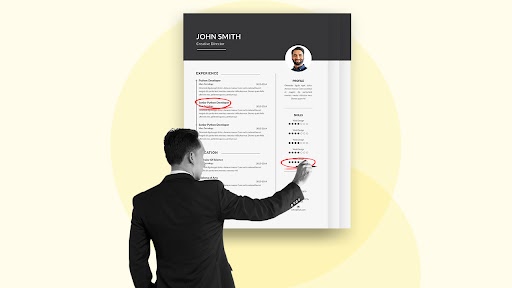How to Evaluate Python Developer Portfolio: Key Steps
- Shachi Dixit
- October 18, 2024
- 6 Minute Read

Python is one of the top five languages used by developers worldwide. Many MNCs, including Google, IBM, and Walt Disney Feature Animation, hire Python developers every year.
When you hire a Python developer, you are looking for someone with more than just coding skills. You need to find a problem solver, an innovator, and a professional with profound knowledge about his trade. This is why it is critical to evaluate Python developer portfolios before you hire a Python developer.
The primary areas for consideration would be the ability to handle projects to demonstrate creativity and knowledge, collaboration skills, adaptability, and client feedback. Such an evaluation helps you make an informed decision about hiring an experienced developer.
This guide puts down all the key points you need to consider in a portfolio before you hire Python developers!
The Step-by-Step Guide to Evaluate Python Developer Portfolios

Let us look at the critical steps that you must follow to hire a Python developer:
Step 1: Understanding the Components of a Portfolio
A well-drafted portfolio depicts the skills a developer has, how much experience the person has in projects and their professional growth.
A. Key Elements of a Developer’s Portfolio
A good portfolio has different components, and here is what you have to look out for:
- Project descriptions for each project
- Code samples and repositories
- Experience and expertise in technical skills and tools used
- Frameworks and Libraries Competency
- Documentation and code readability
- Problem-solving and analytical skills
- Client and project testimonials
B. Key Sections to Look for in a Python Developer’s Portfolio
- Project Summary Section: You must focus on key projects relevant to your needs and understand the role the developer played.
- Soft Skills and Technology Stack Section: It is paramount to check the list of programming languages, frameworks, and tools they are skilled in using.
- Code Quality and Best Practices Section: Evaluate how they maintain the quality of their code with reviews and testing.
- Professionalism and Presentation: A well-organized, clean portfolio speaks well for professionalism. Ensure that the resume consists of detailed explanations in each section.
Step 2: Evaluate Technical Abilities
To evaluate Python developer portfolios, look at their technical skills. A Python developer should be able to code something efficient and scalable. This section covers the most crucial aspects to look for while reviewing a Python developer’s portfolio.
Here are key points to consider:
- Analysis of Code Samples and Projects: Assess the code in terms of its performance and evaluate how the coder tackles bug fixes and optimizes his or her code.
- Quality and Style of the Code: Code quality speaks volumes about the professionalism and care a developer takes while scaling or maintaining projects.
- Adherence to Best Practices in Python: Check whether the candidate is following the standards dictated by PEP 8 on code readability and consistency. Seek adherence to good coding practices, project documentation, and version control systems.
- Python Libraries and Frameworks: Check their familiarity and usage of web development frameworks like Django Flask and FastAPI.
- Data Science and Machine Learning Libraries: Consider their knowledge of Numpy, Pandas, Scikit-Learn, TensorFlow, and PyTorch. This indicates that the developer is adept at executing high-level data analytics.
Step 3: Assess Project Complexity and Diversity in the Portfolio

Evaluating the project’s complexity and diversity helps understand their adaptability, skills at solving a problem, and practical implementation of real solutions. Here are some tips:
- Project Types: A versatile portfolio represents a developer’s skills in various domains and proves that they can handle anything and are competent enough.
- Data Analysis and Visualization: Developers should be able to handle data and visualize it using libraries.
- Open-Source Contributions and Collaboration: This will exhibit their expertise level in application development while ensuring these skills are up to date.
- Real-World Projects: These reflect practical skills, scalable solutions, and familiarity with live environments.
- Integration with Modern Technologies: Check experience with the real-time processing of data feeds and with interactive dashboards.
Step 4: Analyze Problem-Solving Skills

It is not only about coding but also about innovative thinking, logical decision-making, and adaptation. Here’s what to look for:
- Innovative Solutions: Development innovation is about creating new, efficient, and scalable solutions. A good portfolio enables a developer to innovate and be pliable.
- Creative Use of Libraries and Tools: Look for utilization of the Python ecosystem and optimization in projects such as higher computation efficiency.
- Algorithms and Data Structures: Check the implementation of optimized algorithms to speed up data processing and analysis. The ability to comprehend complex structures like hash tables or graphs means one can easily deal with huge amounts of data.
- Approach of the Developer to Challenges: The portfolios should reflect a step-by-step problem-solving approach, showing every stage involved.
Step 5: Check Collaboration and Contributions

When you are hiring remote developer, it is important to assessing the Python developer’s collaborative and contributory abilities towards the coding community is important. Here’s how you should check their contribution:
- Evidence of Collaboration in Projects: The portfolio should emphasize how a developer collaborates and achieves team results. A good portfolio would identify the developer’s role, which helps determine involvement and integration within a team.
- Code Reviews and Pull Requests: Participation in code reviews and pull requests indicates a willingness to accept feedback and implement improvements in project quality.
- Soft Skills and Communication: A portfolio with well-commented code and a clean communication log signifies good interpersonal skills, which are crucial for a team’s smooth functioning.
- Contribution to Open-Source Communities: Contributors exhibit analytical and proactive skills in resolving bugs in open-source software to ensure stability. Getting such candidates for your company is a great idea.
Step 6: Assess Soft Skills

Assessment of soft skills includes communication, being organized and being detail-oriented.
- Check Clarity and Organization: The presentation of a portfolio reflects the developer’s thought process, level of detail, and ability to present well.
- Detail-Oriented Approach: Detailed explanations with annotations or data would demonstrate a developer’s ability to dive down into information
- User Experience in Portfolio Design: Simple and accessible portfolio designs show that a developer is interested in creating intuitive and user-friendly applications.
- Communication Skills as Reflected in Project Descriptions: Project descriptions that present clear communication illustrate how well a developer formulates ideas, collaborates with others, and identifies and comprehends a project’s needs and specifications.
- Client Feedback: If the team members or clients give positive reviews, it proves that the developer is a good communicator and a team player.
Step 7: Watch Out for Red Flags
You are looking to identify not only python developer’s strengths but also the potential red flags that may indicate gaps in skills or professionalism. Here is what you must look out for during hiring IT talent:
- Inconsistencies or Lack of Detail: A portfolio with inconsistent detail or too little detail indicates a lack of experience or transparency.
- Lacking Explanation of Experience: Gaps in experiences not related to the completion of the project become a red flag, indicating exaggeration at some points.
- Generic Answers: If a portfolio does not outline specific problems or methods of solutions, it can be construed as lacking critical thinking.
- Overemphasizing Basic Projects: A profile with multiple similar low-complexity projects says a lot about skill stagnation.
Conclusion
When you hire Python developers, it is a good idea to follow a structured procedure to evaluate Python developer portfolios. It is important to identify talent with the right mix of skills, creativity, and problem-solving capabilities to enhance your projects.
This evaluation goes beyond technical competence to their attitude toward solving a problem and their ability to collaborate, innovate, and communicate through their portfolios. Be careful if you find a lack of depth or consistency in project descriptions.
There are so many factors involved in hiring a Python developer—you should weigh both technical and soft skills seriously so you get a clear idea about what works best for your company.

Thank you for submitting the details!
We will keep your information safe. Feel free to contact us with any questions at hello@uplers.com
Please check your email for next steps shared by Robert.

















